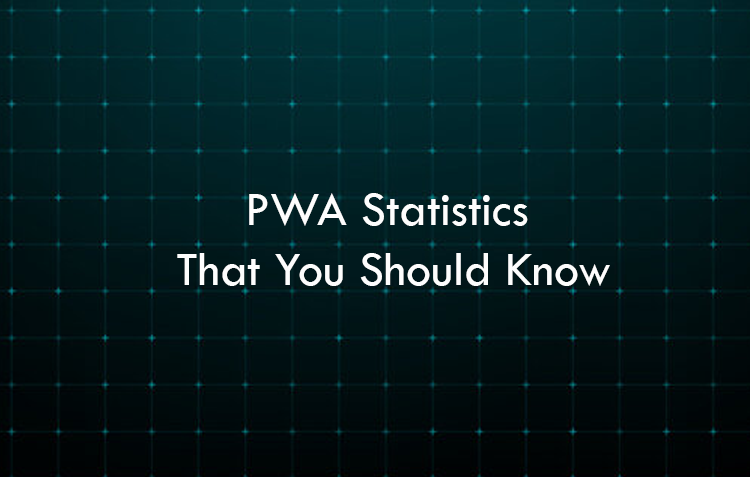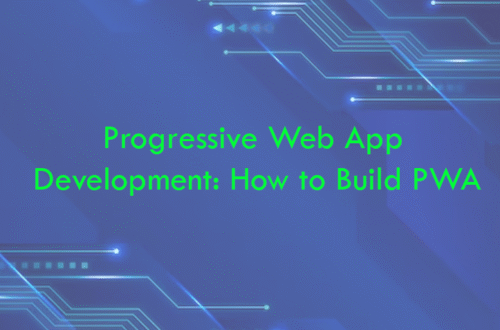For the uninitiated, progressive web apps (PWAs) are online apps that look and act like native mobile apps. One of the numerous advantages that PWAs provide for companies is that they don’t need to be downloaded from an app store.
Progressive web app statistics
Let’s get into the essential Progressive web app statistics that everyone should be aware of in 2023!
#1. PWAs Boast More Than 35% Greater Conversion Rates In Contrast To Native Applications
Studies have shown that the general conversion rate for PWAs is 36% higher when compared to the conversion rates of native applications. The crucial aspect for such parity has been determined to be the gap in mobile revenue between PWAs and Native Apps.
Even though the time spent on smartphones and mobile devices has been substantially more than desktops, the revenue generation is vastly in favour of desktops. The higher content on mobile devices fails to compensate for the revenue gap since mobile sales are still lower.
- Bad Mobile Interface Design Overall.
- Unknown Sources Pose Security Risks.
- The Software Is Cumbersome To Use.
- Difficulty In Seeing Product Information Or Entering Personal Information.
- One Cannot Open Or Switch Between Different Displays To Make A Comparison.
These have been determined to be the main reasons for the difference in conversion rates between mobile and computer devices. However, these issues may be solved by replacing native apps with progressive web apps. They provide the same functionality and user experience as a desktop site while still having a slick mobile design. This is why the first information we have about PWAs—the higher conversion rate compared to natives—is so important.
#2. Customer Engagement Is More Than Doubled On PWAs
Among all Web application usage statistics, the significant fact that baffles everyone is that customer engagement is 50% more on Progressive Web Applications than on Native Apps.
Web Application development companies see a boost in customer acquisition, retention, and engagement of at least 15% and up to 300%. Businesses that saw an increase in consumer involvement did the following:
- More Than A 50% Increase In Mobile Sessions For Lancome.
- The Number Of Mobile Sessions On Makemytrip Increased By Over 150%.
- The Number Of Pages Seen By Twitter Users Increased By More Than 20%.
- With Trivago, Customer Loyalty Has Increased By Over 100%.
- Increased Re-Visits To Olx By Around 250%!
Since more than 60% of smartphone users refrain from installing new apps, it stands to reason that progressive web apps, which make it possible to quickly and comfortably access one’s preferred website while on the go, would be of great importance.
#3. For Businesses That Use PWAs, Page Load Times Might Increase By A Factor Up To 10
Speed is one of the most crucial factors in offering a flawless digital experience, as studies show that 53% of users would quit a mobile website if it takes more than 3 seconds to load. As a result, we’ll talk about page speed and the potential benefits it may bring organisations after they start using PWAs.
One of the most exciting features of PWA’s advantages is that they load quickly. This, coupled with their ability to work even when users are without an internet connection, means that users may use their go-to app whenever they choose.
The following are examples of companies who have seen a drop in page load times because of the use of progressive web applications:
- The travel website Wego has managed to cut the typical page load time in half, from 12 seconds to only 3 or 1;
- Using 3G, Twitter Lite, a Progressive Web App, may be fully functional in under 5 seconds on the vast majority of modern electronic gadgets. On average, it loads 30% faster than the typical website.
- ZEE5: Since launching a PWA, the streaming service has tripled its user base and reduced buffering time by half.
- Time spent with Treebo has been cut in half, on average.
These PWA stats prove that there are other gains than the speed that can be made by companies adopting PWAs. Time to Engage (TTI) refers to how long it takes for a user to be able to engage with your website, even if it is still loading, and is another essential performance component that improves. That’s because data and functionality in progressive web applications are cached in a “service worker,” meaning they load instantaneously whenever the app is accessed.
#4. In Most Cases, The Cost Of Developing A PWA Is Three To Four Times Lower Than That Of Developing A Native Mobile App
Web application usage statistics shows that, on average, developing a PWA costs three to four times less than creating a native mobile app and may be as much as ten or fifteen times less in some instances.
If the software is complex or requires specialised features, the cost of designing a new standard app might be relatively high. The price of making an app is inflated by the fact that it must be developed independently for each app store and operating system. However, progressive web apps may be built for far less money and distributed to all major app stores and operating systems with only one code set.
#5. There Is A 33% Reduction In Support Costs For PWAs
Research and statistics show that PWAs are 33% less expensive to maintain than their native equivalents which is why Web Application development companies are shifting from native applications to PWAs. No longer will you need to invest in several sets of tools, programming languages, and other resources to maintain multiple versions of an app. Progressive web applications lessen the burden of constantly updating many sites.
To add insult to injury, a company with a website and a mobile app must pay for the additional, pricey maintenance. Typically, you’ll need to build separate teams to handle online and mobile platform development, such as iOS and Android. The cost savings come from progressive web apps’ portability across browsers and operating systems.
#6. PWAs May Be Up To 90% Smaller Than Their Native Mobile App Equivalents
One of the critical benefits of PWAs is that they are significantly smaller and lighter than their native mobile app equivalents, which brings us to the second measure on our list: the size of a PWA. They’re often less than 1 MB in size. The following are some examples of this in action:
- Twitter Lite, a progressive web app (PWA) that has helped the social media platform improve efficiency and user engagement, is a prime example of the technology at work. The software is 23.5 MB on Android and a massive 116.5 MB on iOS, but the company shrank it to just 600 KB! Twitter used cached data and fewer media assets to make its app smaller and more accessible.
- Pinterest is another example of a successful progressive web app; despite being just 150 KB in size (compared to 17 MB on Android and 56 MB on iOS), it has experienced a parabolic rise in the number of new users and a 5 per cent increase in the amount of time they spend on the site using mobile devices.
- Using a lightweight 600-kilobyte progressive web app, Starbucks could quadruple its daily active users. Mobile device orders now outnumber those made through desktop PCs.
- OpenSooq’s new progressive web app (PWA) is just 28.3 kilobytes, yet it has raised the company’s engagement rate by 25% due to longer user sessions. What finally ensued was a 260% surge in enquiries.
Final Words
In conclusion, progressive web apps are a perfect answer to a problem that many people who depend on mobile devices have, namely the tedious and annoying requirement to delete programmes to make room for new ones. A PWA is so small and uses so little bandwidth that you don’t have to worry about not having enough storage space for it. One significant barrier to using native mobile apps is the space they take on the device.






